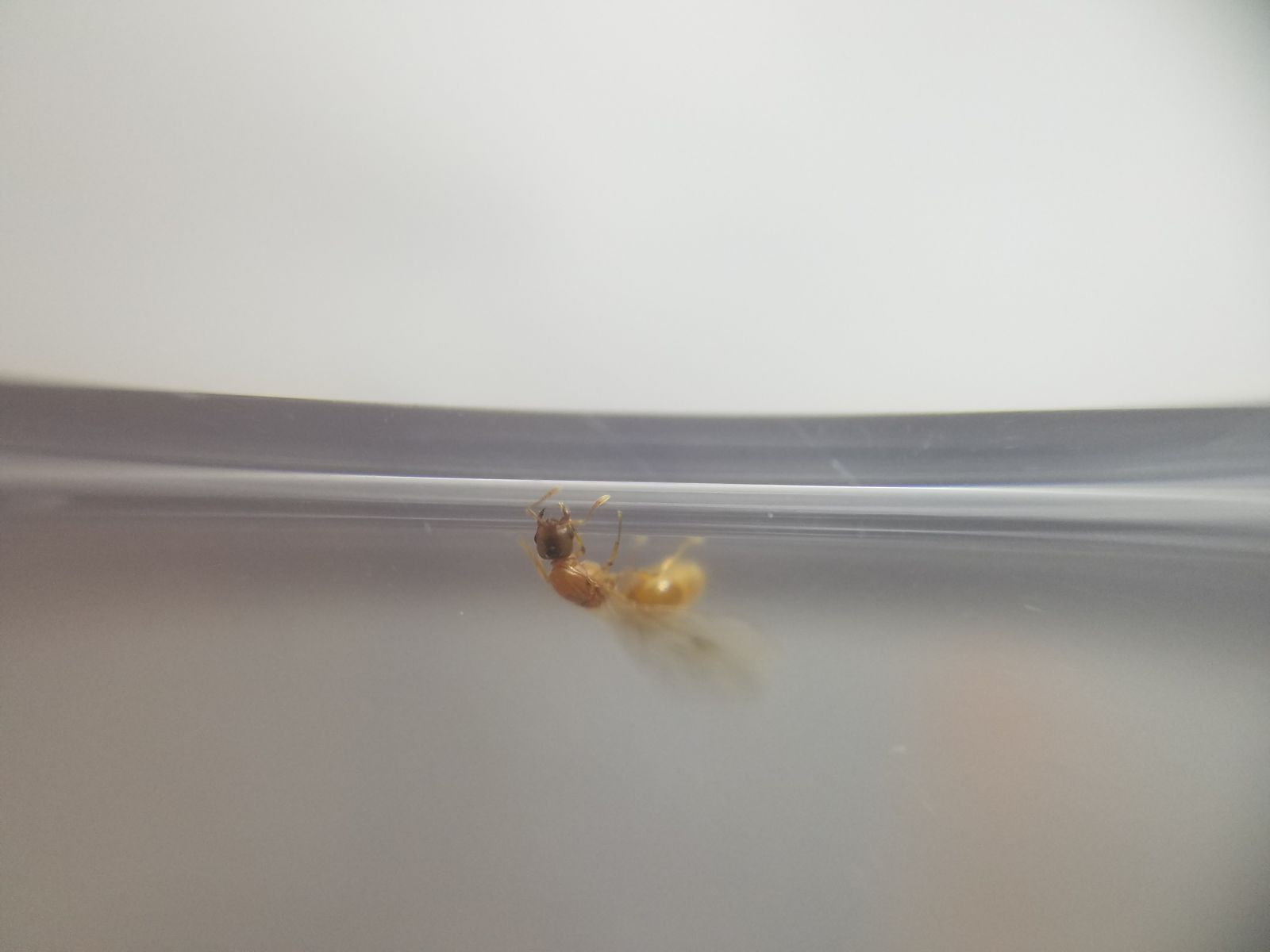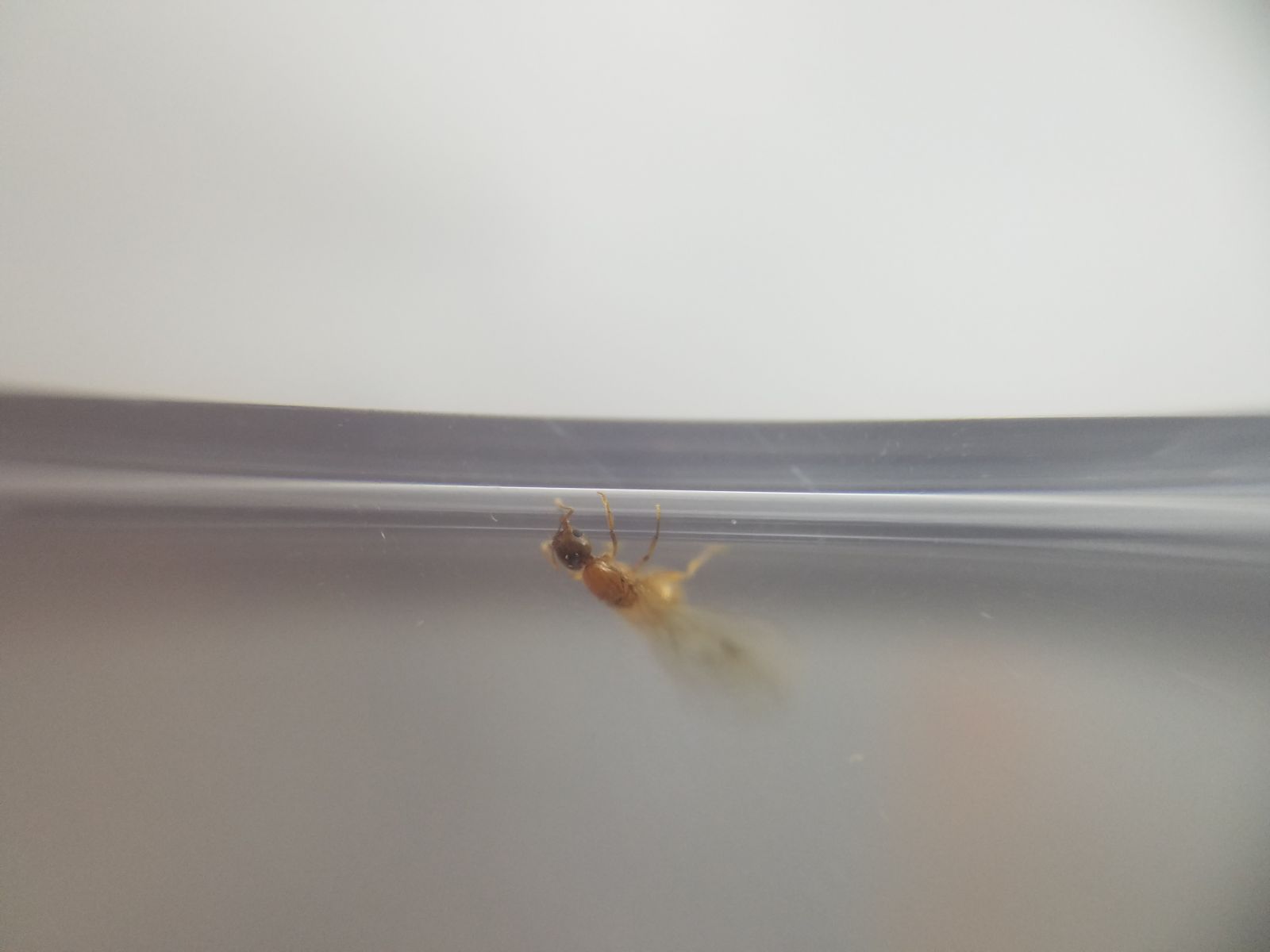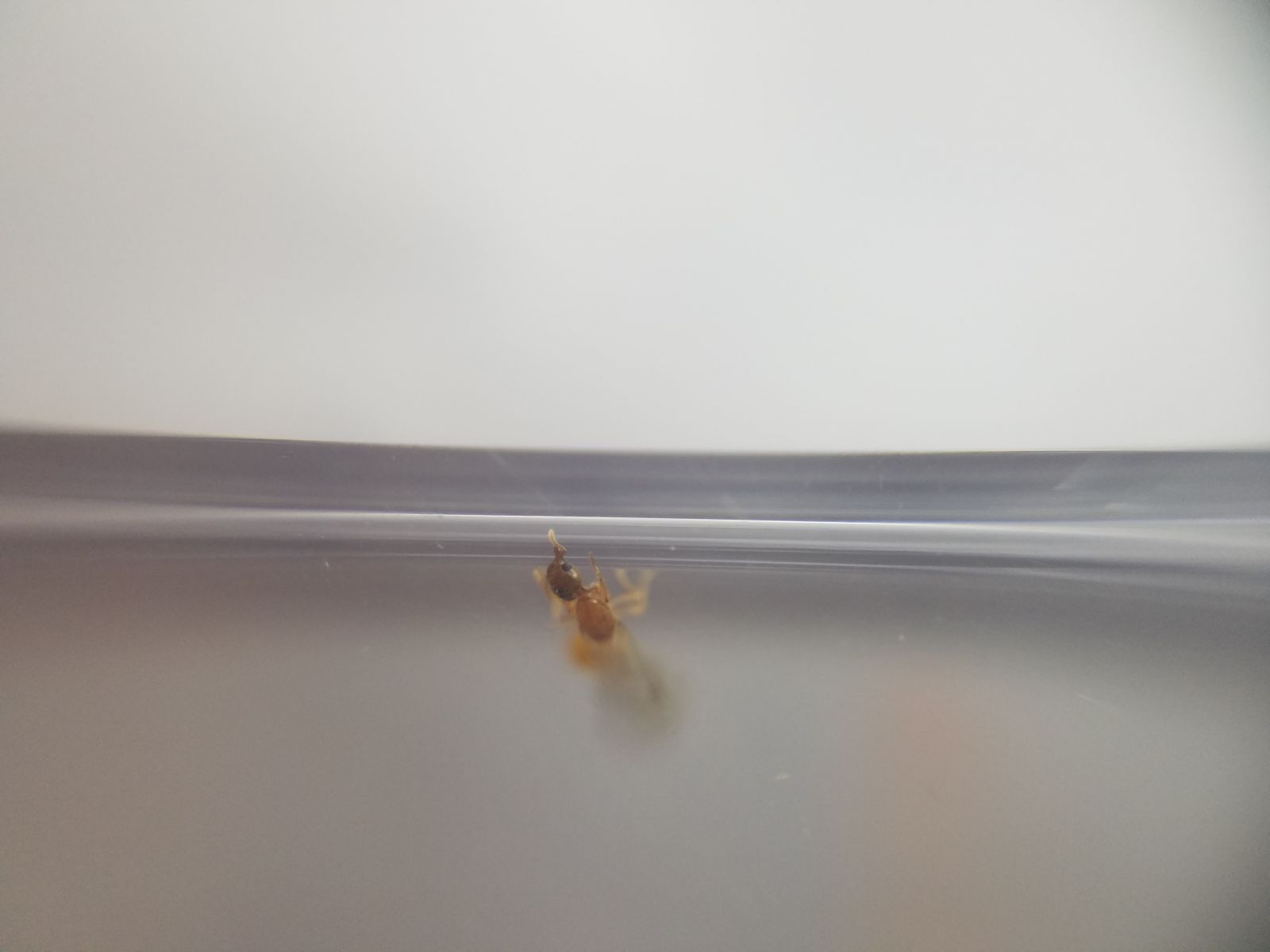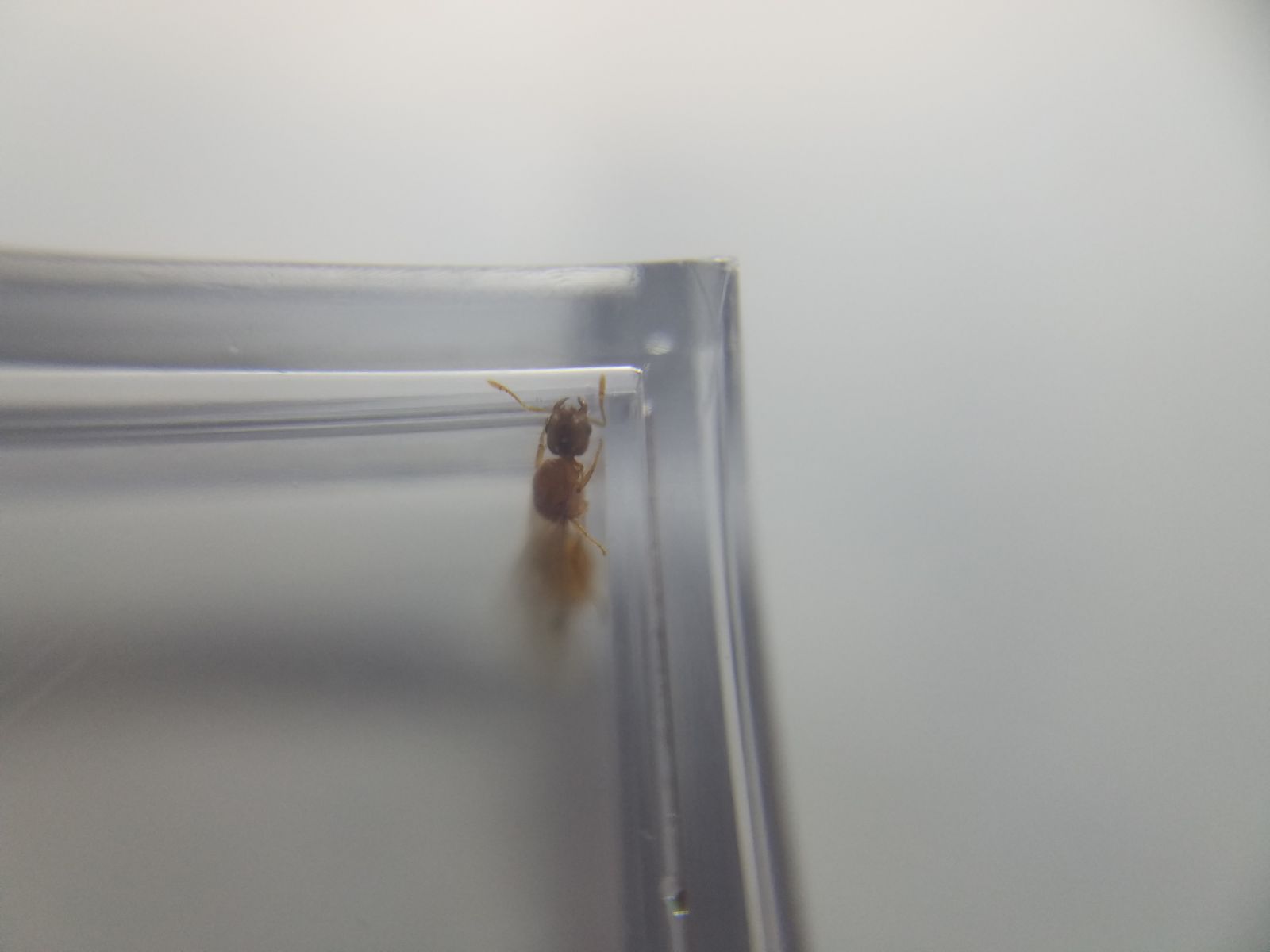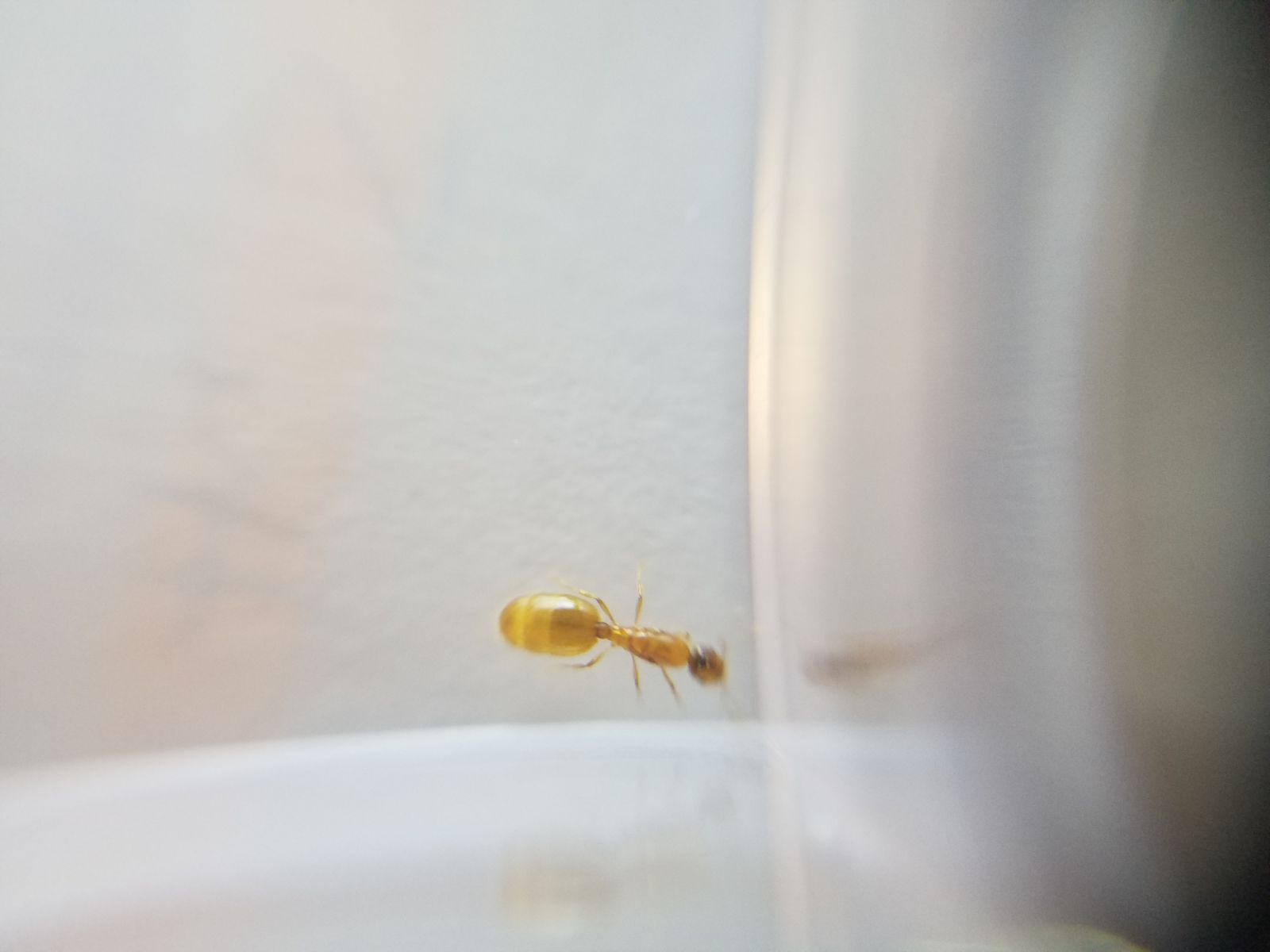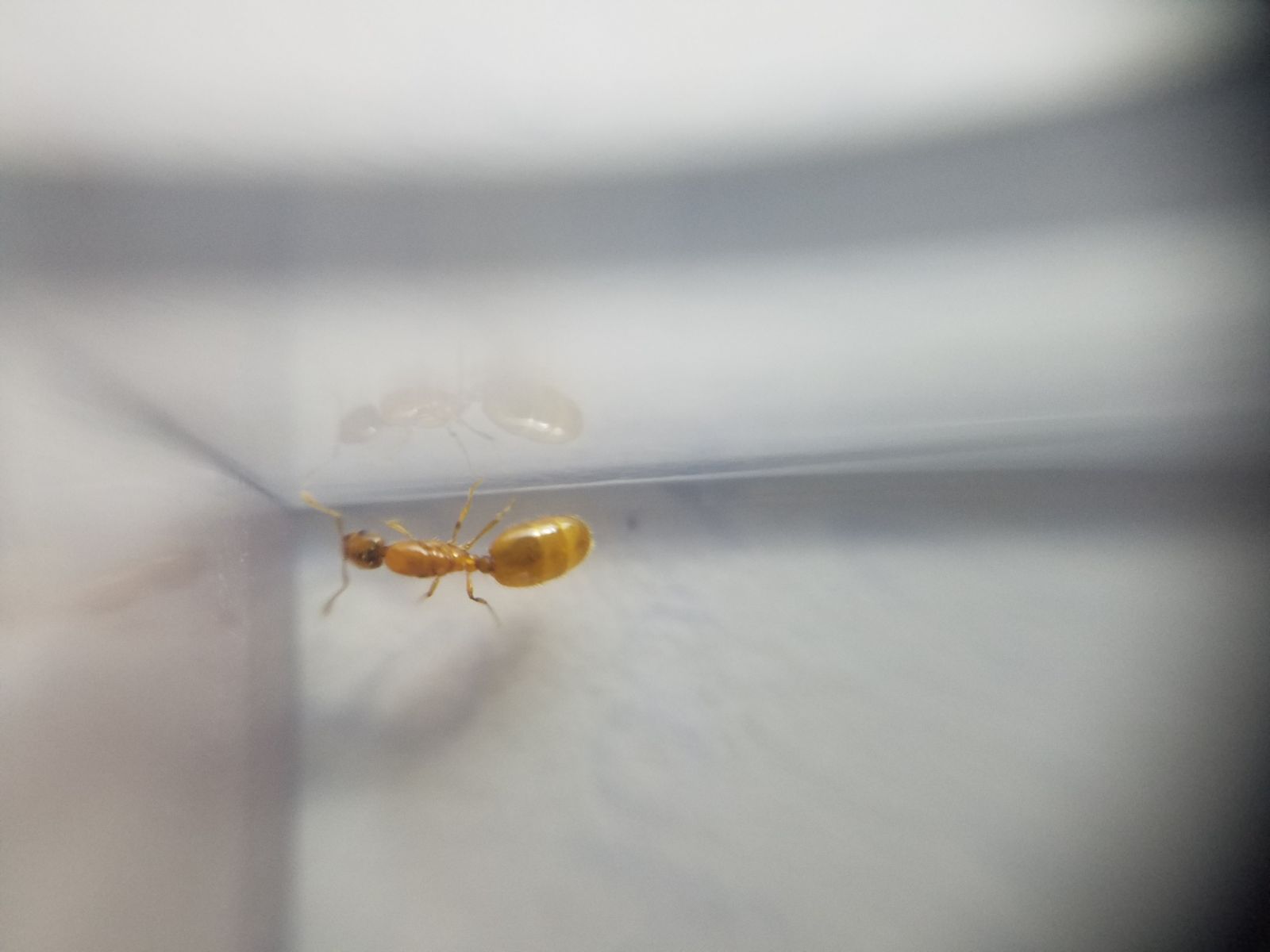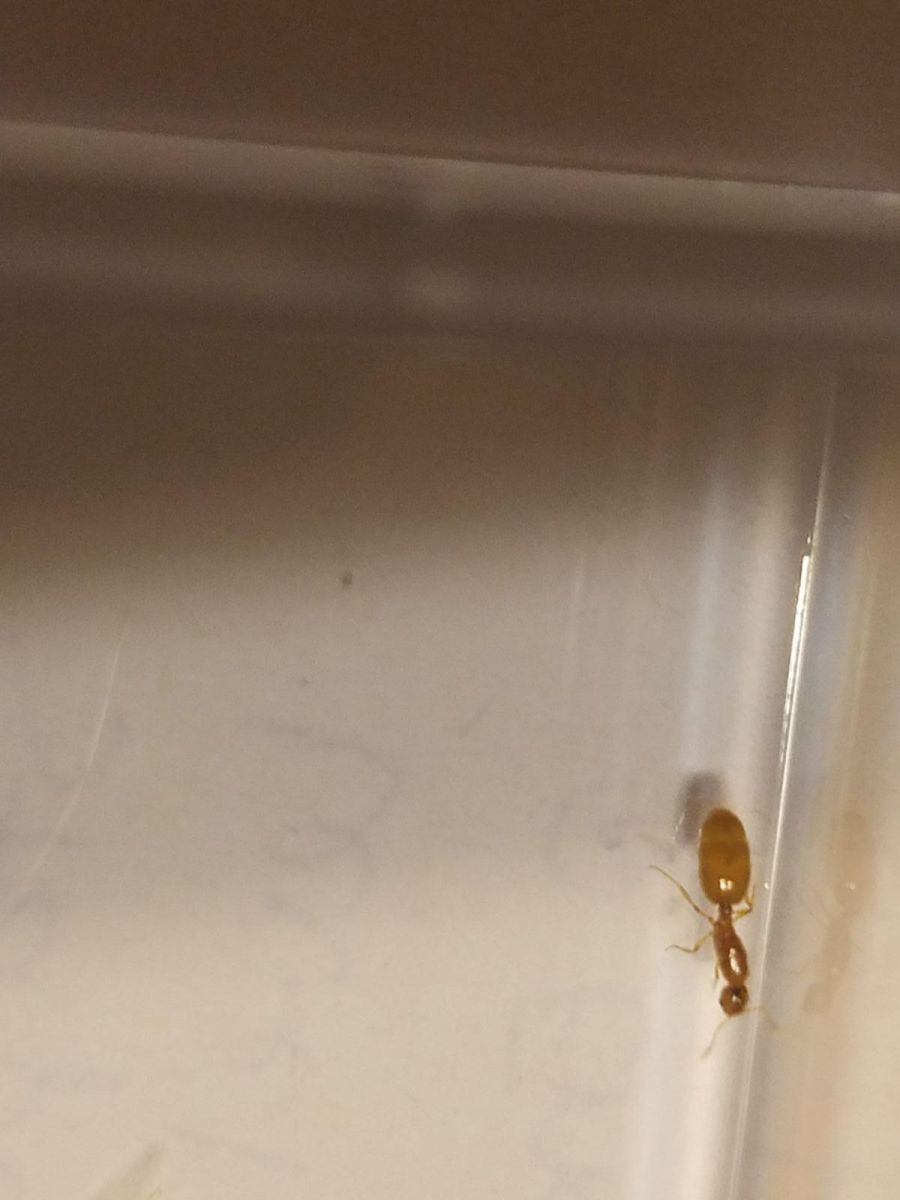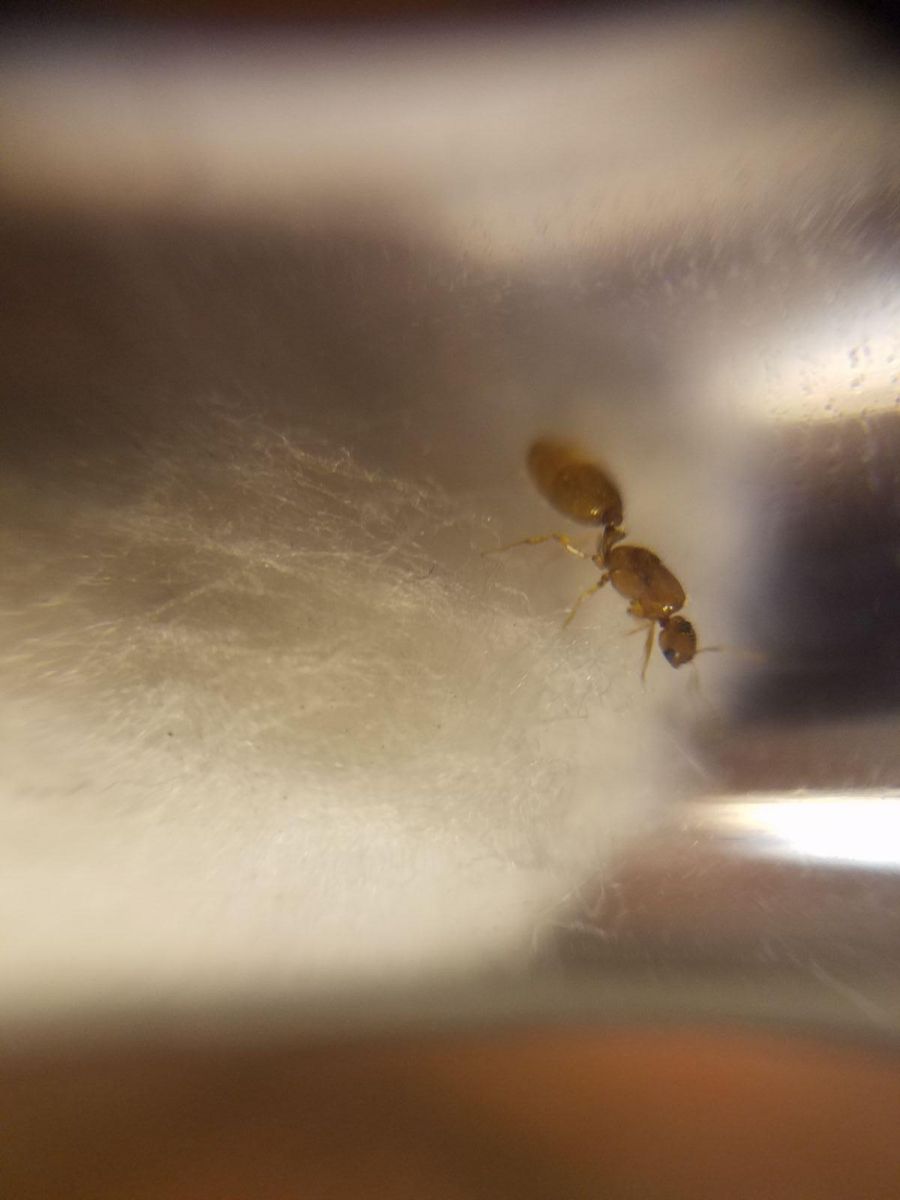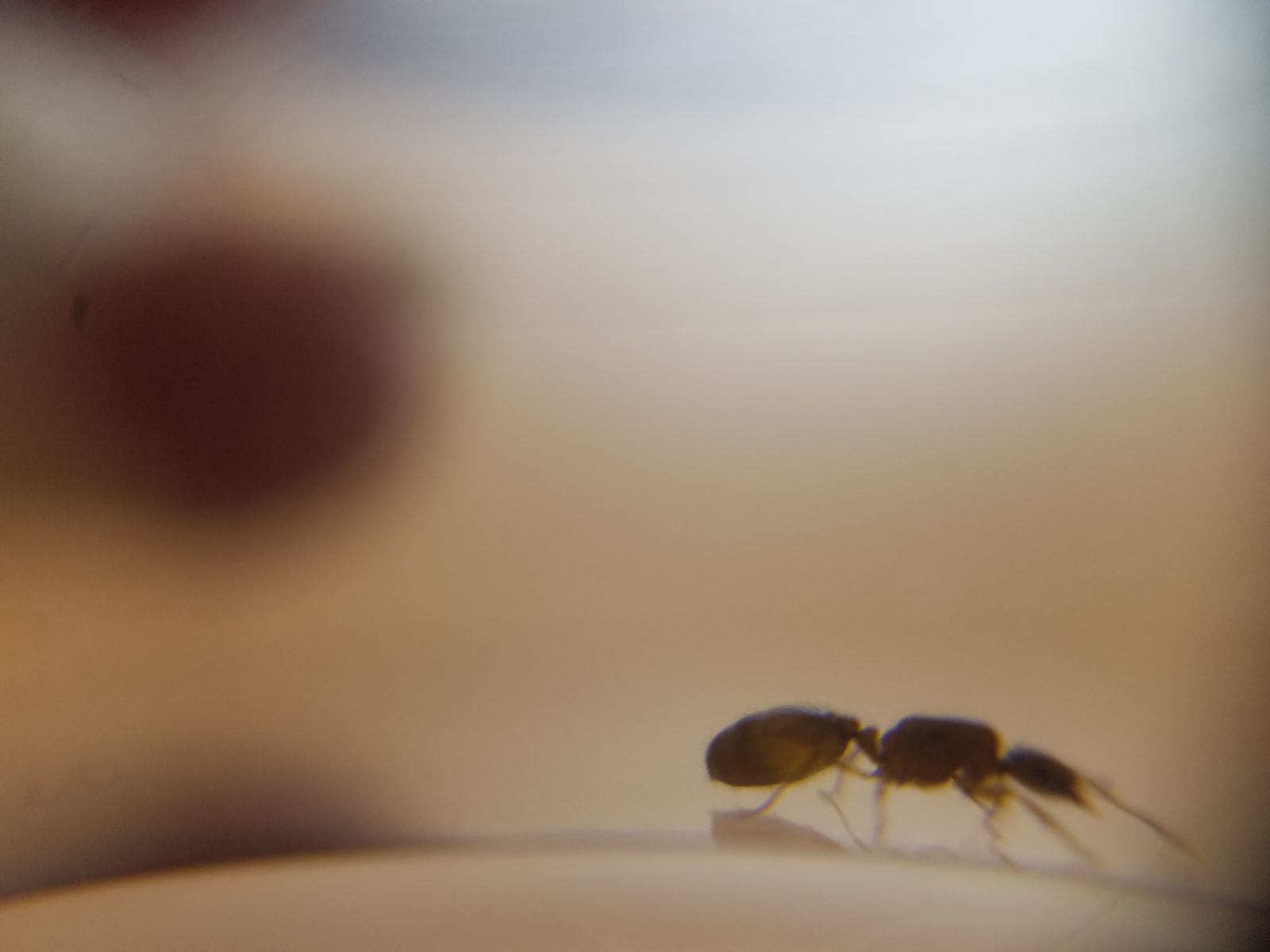Body:
1. Location of collection: Concrete pad near well-tended gardens at Cal Lutheran University. Gardens were covered in mulch, various fruit trees and lots of jasmine growing.
2. Date of collection: 6/24/2017
3. Habitat of collection: Collected in a garden, but the area is typically a very hot, dry desert.
4. Length: She moves a ton, but my best attempt at measuring her has her between 5-6 mm
5. Coloration, hue, pattern and texture: Generally a yellow color, head and mesosoma are slightly darker than gaster.
6. Distinguishing characteristics: She is tiny, so I'm having difficulty getting this info. As far as I can tell, she has a pronounced first petiolar node, with the second one being much smaller, almost transitioning right into her gaster.
8. Nest description: Unable to find nest.
This was around 7:30 pm, it was cool, maybe 70 F outside, and a light, constant breeze. I was watching the mating flight, and even captured a pair while they were mating, though I didn't get a picture before they separated. The males were almost black, or dark brown, and maybe 75% the size of the females.
Here are the best pictures I can manage, my best guess is Solenopsis molesta, but apparently its difficult to differentiate between that and Monomorium pharoaonis, so I'm asking for help. Thanks for anything you can give me.
